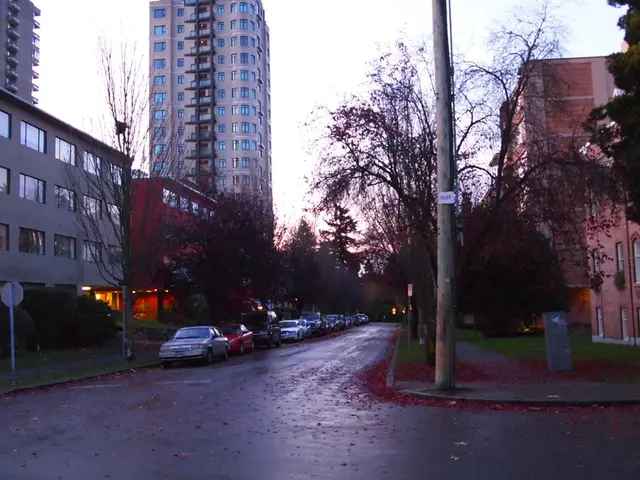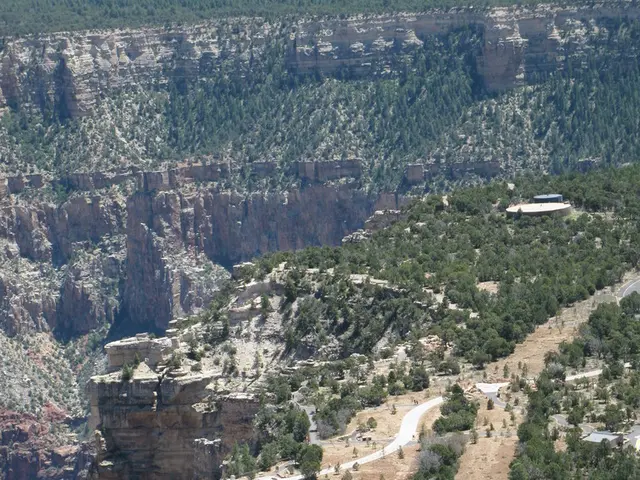Unusual Views of the Giza Pyramids: Fresh Vistas from Unconventional Angles
In the 21st century, the breathtaking landscape of Giza has undergone a remarkable transformation. Far removed from its ancient origins in the golden sands, Giza now stands amidst a tangled jungle of modern buildings, threatening the very sanctity of its legendary pyramids, Sphinx, and temples. Despite this modern-day growth, Egypt remains a captivating fusion of the ancient and the contemporary, offering a unique glimpse into the historic lives of its people.
At the heart of this mesmerizing blend lies the Giza Necropolis – home to the Pyramids of Giza, their respective temple complexes, and the Great Sphinx of Giza. Situated on the Giza plateau, this site, nestled eight miles southwest of Cairo and on the edge of the Western Desert, showcases the pinnacle of ancient Egyptian pyramid construction.
The pyramids themselves are the embodiment of architectural wonder. The Great Pyramid of Giza, allegedly built as the eternal resting place for Pharaoh Khufu, boasts approximately 2.3 million stone blocks – some originating as far away as Aswan. Weighing a staggering six million tons, it held the record as the tallest human-made structure for an astounding 3,800 years after its completion.
Adjacent to the pyramids, the majestic Great Sphinx holds the title of the world's largest monolithic statue. Though its mysteries are as profound as they are countless, the Sphinx shares the same shroud of secrecy as the pyramids themselves – no ancient text exists to tell us when, why, or how it was constructed, or even what purpose it served.
Despite the absence of ancient accounts, surveys of the Giza plateau have revealed hidden tunnels and cavities beneath its sacred structures, fueling many theories about long-lost knowledge and advanced civilizations that may have existed before ancient Egypt. These theories, while largely speculative, serve as a testament to the Giza plateau's enigmatic allure.
Beyond its ancient treasures, modern-day Giza challenges the notion that history and development must be mutually exclusive. By exploring innovative approaches that harmonize tourism, economic growth, and cultural preservation, Egypt aims to protect its ancient wonders for future generations while simultaneously fostering its national prosperity.
Through the introduction of immersive technologies, sustainable tourism infrastructure, and enhanced conservation efforts, Egypt strives to ensure that its heritage sites like the magnificent Giza Pyramids thrive – surviving not only the test of time but also the test of modern civilization. Caution and conscious planning, however, are crucial to navigate the balancing act between progress and preservation that will secure the long-term future of these ancient marvels.
Join the conversation and enter the chance to win exciting giveaways within our lively Telegram community. Connect with us on Telegram today! t.me/our website
Bonus Facts:
- Throughout its history, Giza was under the control of various cultures, including the Persians, Greeks, Romans, and Byzantines.
- One of the villages south of Giza was named Phylake, though it is distinct from the modern-day city and should not be confused with it.
- Memphis, an ancient city located near Giza, served as Egypt's Pharaonic capital during the Old Kingdom and remained significant throughout its history due to its strategic position at the Nile Delta's mouth.
- Tourism plays a critical role in Egypt's economy, contributing 10-15% of the country's GDP and supporting millions of jobs.
- To attract 30 million tourists yearly by 2028, Egypt has invested in expanding hotel capacity and eco-friendly tourism complexes, such as the upcoming Grand Egyptian Museum, which is designed to incorporate solar power and other green technologies.
- The emblematic Pyramids of Giza, towering over the Western Desert, showcase the pinnacle of ancient Egyptian architecture, with the Great Pyramid dating back to the Pharaoh Khufu's reign.
- While countless theories about the Giza plateau's history and the construction of its monuments have been proposed, the precise details of the Great Sphinx's creation remain shrouded in mystery, absent from any ancient texts.
- Aside from its iconic pyramids, the Giza Necropolis boasts a rich history, reflecting the influences of various cultures, including the Persians, Greeks, Romans, and Byzantines, during their control of the region.
- In addition to its ancient treasures, contemporary Giza has become a living testament to the harmonious blend of history and modern culture, with immersive technologies, sustainable tourism infrastructure, and enhanced conservation efforts preserving its heritage sites for future generations while stimulating economic growth.





